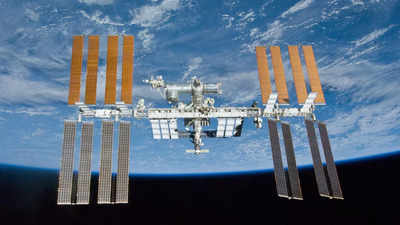Context
-
For over two decades, the International Space Station (ISS) has been orbiting Earth at a speed of about eight kilometres per second, while an international crew of astronauts and cosmonauts onboard conducted ground breaking scientific investigations that have thrown open the doors for deep space exploration. But now NASA has announced that the spacecraft will cease operations in 2031, after which it will fall out of orbit and plunge into the waters of the South Pacific Ocean.
About International Space Station (ISS)
- The International Space Station was the brainchild of former US President Ronald Reagan, who in 1984 proposed building a permanently inhabited spacecraft in cooperation with a few other countries.
- In 1998, the first piece of the space station, a control module, was launched into space on board a Russian rocket. About two weeks later, a crew onboard the US’ Endeavour space shuttle attached the control module with another part, the Unity node.
- It was on November 2, 2000, that the first crew arrived. Since then, the space lab has carried over 200 astronauts and cosmonauts from about 19 different countries — marking a continuous human presence in space.

Credit: Times of India - According to NASA, the space station weighs about a million pounds on earth and is approximately the same size as an American football field.
- It also houses laboratory modules from the United States, Russia, Japan and Europe.
- Several landmark firsts were recorded onboard the ISS in the last two decades. For instance, in 2018, NASA’s Cold Atom Lab became the first facility to produce the fifth state of matter, called a Bose-Einstein condensate, in space. In 2016, a NASA astronaut was able to sequence DNA in space for the first time.
How will the ISS retire?
- According to NASA’s budget estimates, the ISS’ re-entry into the Earth’s atmosphere will take place in January 2031. Mission control will first lower its altitude, before the spacecraft begins its descent into the “South Pacific Oceanic Uninhabited Area (SPOUA),” in an area known as Point Nemo.
- ISS operators will perform the ISS re-entry burn, providing the final push to lower ISS as much as possible and ensure safe atmospheric entry.
- Point Nemo has grown to become a sort of space cemetery, where decommissioned space debris is often brought to rest. Located about 2,700 km away from any land, it is named after a character in Jules Verne’s novel “Twenty Thousand Leagues Under the Sea.
What’s next for the ISS?
- According to NASA, once it retires, the ISS will be replaced by “one or more commercially-owned and -operated” space platforms.
- The private sector is technically and financially capable of developing and operating commercial low-Earth orbit destinations, with NASA’s assistance,
Visit Abhiyan PEDIA (One of the Most Followed / Recommended) for UPSC Revisions: Click Here
IAS Abhiyan is now on Telegram: Click on the Below link to Join our Channels to stay Updated
IAS Abhiyan Official: Click Here to Join
For UPSC Mains Value Edition (Facts, Quotes, Best Practices, Case Studies): Click Here to Join
